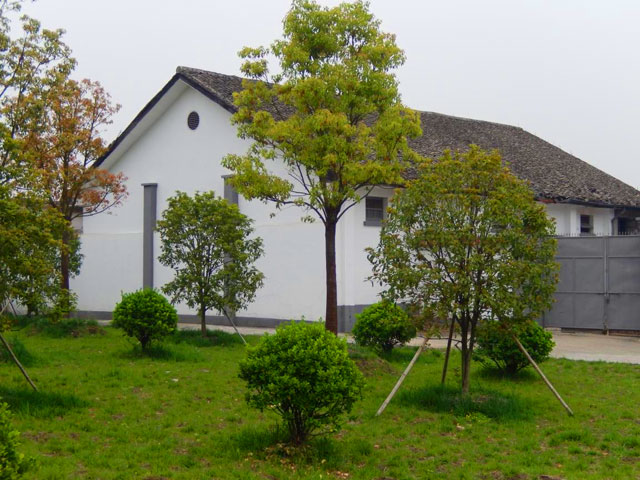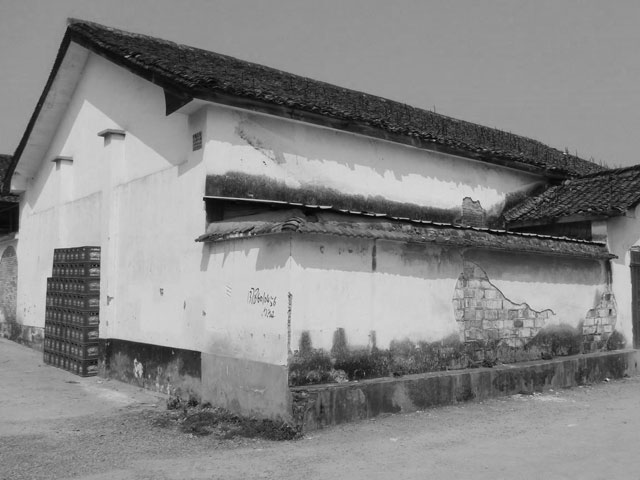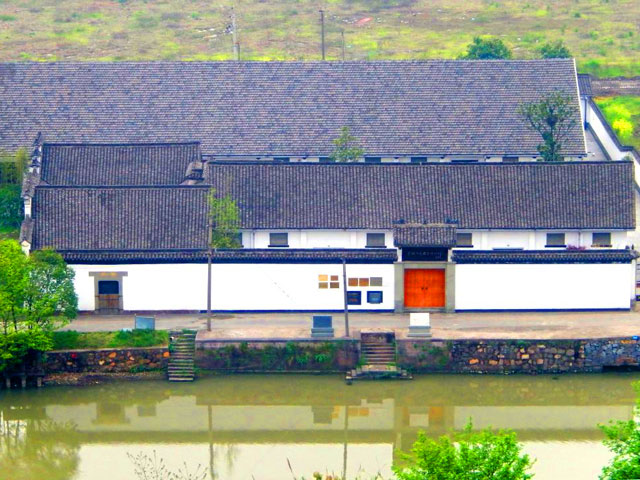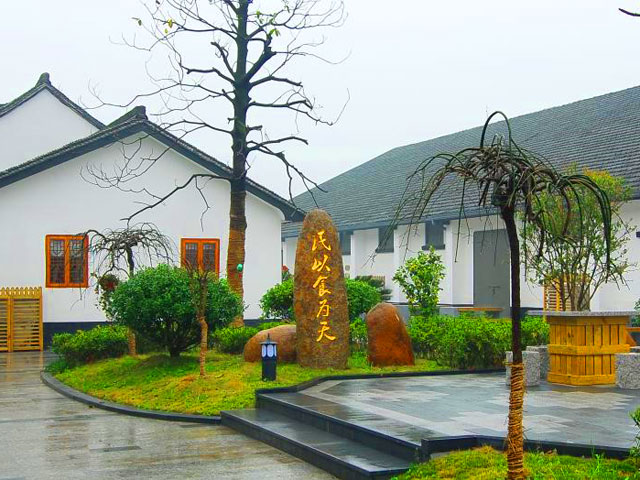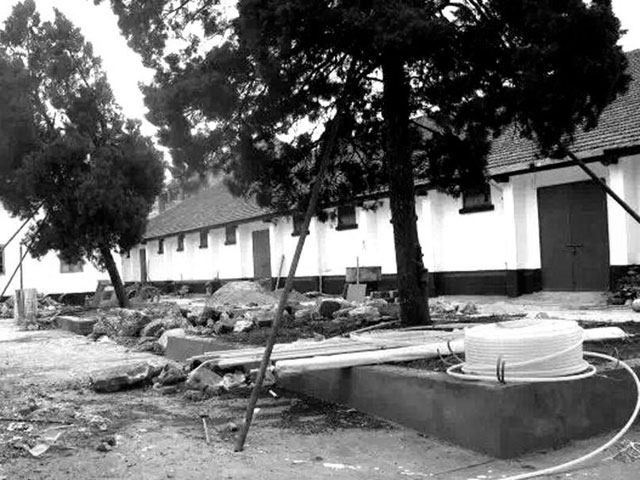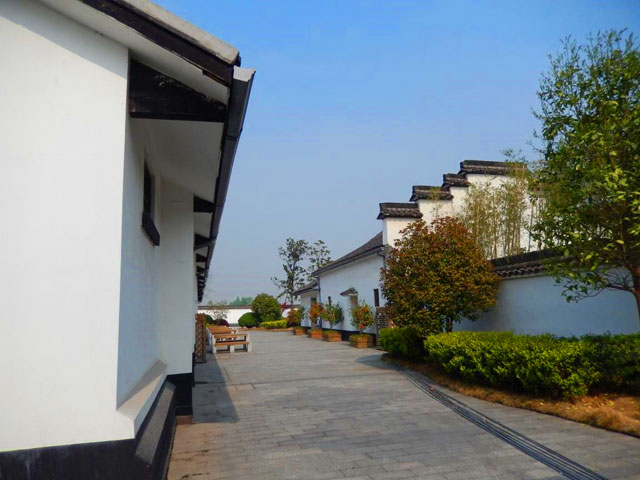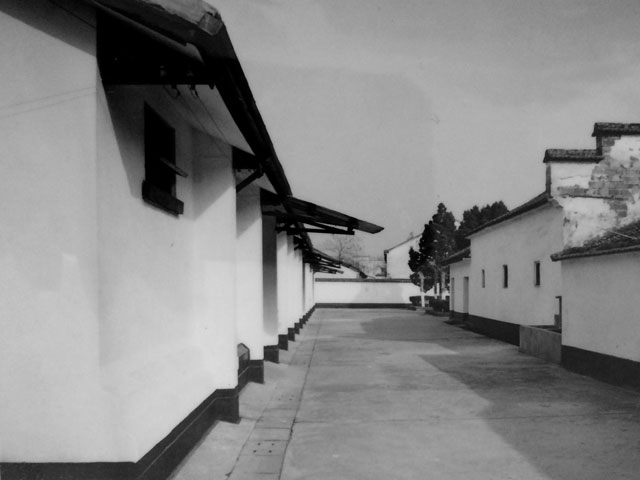小镇概况
Dream town profile
 |
景区简介 Introduction "Dream town" is one of the first 37 characteristic small towns in Zhejiang province, which is an excellent example of small towns with Chinese characteristics. Located in Cangqian street, Yuhang district, Hangzhou city, the scenic area of dream town covers an area of about 3 square kilometers. The core block is as far as Hangzhou Normal University in the east, east and west avenue in the west, Yuhang Tong River in the south and Xuanhang railway in the north. Four blocks have been built, including Internet village, angel village, entrepreneurial market and entrepreneurial street. In order to follow the trend of "mass entrepreneurship and innovation" and the development opportunity of "Internet plus", in August 2014, the provincial and municipal government explicitly planned to build the dream town of 3 square kilometers in the future technology city. The development concept of dream town is "integration of three aspects", that is, ecology firstly, living later and production finally, and "four suitability ", that is, living suitability, entrepreneurship suitability, culture suitability and tourism suitability; Adopt a "with core, no boundaries" spatial layout. We conduct full protection of natural ecology and historical heritage in the development, dig the cultural background deeply, upgrade and improve the memory space in accordance with the requirements for the Internet office, so as to promote organic superposition, symbiotic harmony of the culture, tourism, industrial function, make entrepreneurs own the city supporting, and start up business without any worries, enjoy the rural breath, and return to nature, make one " roaming freely between retreat and engagement" ideal home, and also become a new model of garden city. The original water system and rice field are retained in the scenic area. The white walls and black tiles of the park building are reflected in the pond, showing the charm of the ancient town in south east China. With "innovation, entrepreneurship, and the creator" as the theme, with the implementation of the "talent leading, innovation-driven, city and industry integration " development ideas, comprehensive improvement of characteristic cultural connotation, innovative and entrepreneurial service level and leisure travel environment, we forge the dream town to be a science, education, culture, leisure and tourism destination with a set of Innovation and Entrepreneurship, Research, learning and communication, and also the leisure, sightseeing and cultural experience. |
地理位置
Geographical position
Dream town is located in Cangqian street. Cangqian old town was formerly known as Lingyuan. In the second year (1132) of Shaoxing in the Southern Song Dynasty (1132), the convenient granary was built in the north of the street, and the south side is regarded as front side in ancient times, so it is called Cangqian street. Cangqian town is a town under the jurisdiction of Yuhang district, Hangzhou city, Zhejiang province, which is located on the western side of the ancient canal in Hangzhou city. It is an ancient town with a history of more than 800 years, 10 kilometers away from the center of the city. The extended segment of Wenyi road in Hangzhou runs through the whole town, with criss-cross Xiangcang,Yucang, Liangcang, Shangcang and other highways as well as east-west avenue within the bond, which passes through national highway No.104 and national highway No. 102 respectively. so the traffic is very convenient. Yuhang Tong River runs across the whole country, and a number of wharfs are built such as Qianshen ; Xuanhang railway has a freight station in Cangqian with busy railway transportation. These advantaged convenient conditions make Cangqian town become a material distribution center with highway, railway, waterway at the same time. According to the fifth census data, the town had a population of 32,233 at the end of 2000, covering a total area of 48.9 square kilometers. Cangqian town is located in the south of the central part of Yuhang, east coast of south tiao creek. Yuhang Tong River runs across the town. It is adjacent to Yuhang town in the west, Xianlin town in the south, Wuchang town in the east and Liangzhu town and Pingyao town in the north. Cangqian is a plain water network area with high terrain in the west and low terrain in the east. The territory has criss-cross rivers, convenient irrigation, and it is an important grain production area of Yuhang. Good geographical environment and generations of cultivation of the Cangqian people makes Cangqian not only won the “south-china granary, the home of silk, an abundant place" reputation, but also raises the simple people and outstanding talent. The clear water silk wadding or mutton is praised by human beings for hundreds of years; Master of Chinese characters Zhang Taiyan, famous sociologist Chen Da, famous biologist CAI Bao are outstanding representatives of Cangqian people. The former residence of Zhang Taiyan, the key cultural relic of Zhejiang, is well located in Cangqian town. Now the restored former residence continues to welcome visitors on entrepreneurship street in dream town.
水文地貌
Hydrographic geomorphology
Cangqian ancient town, was formerly known as Lingyuan. In the second year of Shaoxing (1132) in the Southern Song Dynasty (1132), the convenient granary was built in the north of the street, and the south side is regarded as front side in ancient times, so it is called Cangqian street. It has a history of 874 years. Although the relationship of affiliation and establishment have changed several times, the name of Cangqian has been used all the time. The administrative area of the town is 52 square kilometers, with 10 villages and 1 community under its jurisdiction, and 35120 people. Yuhang Tong River cuts across the territory, east tiao creek facing to its west side. In the southwest edge, there are Songjia mountain, Wanjinshan hill, and Gua mountain and Wu mountain are at the northeast corner, facing to the plain across the water, forming a beautiful scenery of embedded mountains and rivers. The history of the ancient town can be simply summed up as "a river, a tree and a story”, “a pot, a granary, a master", of which “a river "refers to the Beijing-Fuzhou canal around the street, “ a tree” refers to that there was a one-thousand-year boxtree before the granary, “a story" refers to that the old street once deduced the story of Yang Naiwu and Bi Xiugu, “a pot "refers to the Cangqian Mutton pot, "a granary" means the granary of the world, “a master” means master of Chinese culture Zhang Taiyan.
Tiao creek was divided into east Tiao creek, middle Tiao creek, north Tiao creek, west Tiao creek. East Tiao creek sources out of Majiangang, with altitude of 1271 meters, Tianmu Mountains in the east of Linan, goes all the way to the east, runs through Linan, enters into the area via Zhongtai town, via Yuhang town, accepts middle Tiao creek in Tangwandu within the boundaries of Pingyao town, and accepts north Tiao creek in Longshezui. And three waters converge to one river, via Pingyao, Deqing, enter into Huzhou city, join with west Tiao creek and go into Taihu Lake. The whole area is 158.36 kilometers long and covers a drainage area of 3,276 square kilometers.
The Beijing-Hangzhou Canal, enters from the Dama Town, Tongxiang, flows through the towns of Bolu, Wuhang, Tangqi, Dongtang, Chongxian, Yunhui, and Gouzhuang, and flows into the urban area of Hangzhou. It has a total length of 31.27 kilometers within the city and a drainage area of 667.03 square kilometers. The annual average precipitation in the basin is 855 million cubic meters, the annual average runoff volume is 339 million cubic meters, and the river width is 60-70m. The water depth is 3.5 meters throught the year. Shangtang River, from the Genshan Gate, Hangzhou, enters via Xingqiao Street, crosses Linping Street, and flows into Qiantang River in Yanguan Town, Haining City. The area is 11.38 kilometers long, the river is about 20m wide, and the water depth is about 2 meters throughout the year.
The annual and seasonal changes of river discharge and amount of precipitation are consistent. The average annual runoff amount of the city is 775 million cubic meters. The average annual runoff amount of Tiao creek was 381 million cubic meters. And east Tiao creek Pingyao station recorded that the annual runoff was 2.076 billion cubic meters in years of abundant water (1954), only 424 million cubic meters in years of low water (1978). The average annual runoff in canals was 324 million cubic meters, and it of Shangtang river was 0.07 billion cubic meters.
历史文化
Historical culture
Cangqian ancient town, was formerly known as Lingyuan. In the second year of Shaoxing (1132) in the Southern Song Dynasty (1132), the convenient granary was built in the north of the street, and the south side is regarded as front side in ancient times, so it is called Cangqian street. It has a history of 874 years. Although the relationship of affiliation and establishment have changed several times, the name of Cangqian has been used all the time. The administrative area of the town is 52 square kilometers, with 10 villages and 1 community under its jurisdiction, and 35120 people. Yuhang Tong River cuts across the territory, east tiao creek facing to its west side. In the southwest edge, there are Songjia mountain, Wanjinshan hill, and Gua mountain and Wu mountain are at the northeast corner, facing to the plain across the water, forming a beautiful scenery of embedded mountains and rivers. The history of the ancient town can be simply summed up as "a river, a tree and a story”, “a pot, a granary, a master", of which “a river "refers to the Beijing-Fuzhou canal around the street, “ a tree” refers to that there was a one-thousand-year boxtree before the granary, “a story" refers to that the old street once deduced the story of Yang Naiwu and Bi Xiugu, “a pot "refers to the Cangqian Mutton pot, "a granary" means the granary of the world, “a master” means master of Chinese culture Zhang Taiyan.
The ancient town has a long history and rich cultural heritage. Clear water silk wadding was famous on Ming and Qing dynasties. The early bamboo shoots with thick meat, soft quality and fresh taste were famous in and outside the province. Longquan temple small white beans with special delicious taste were regarded as tribute. In the south side of the town, there are Baihu mountain and neolithic remains. The former residence of Zhang Taiyan, a modern democratic revolutionist, thinker and master of Chinese characters, is located in Cangqian old street, whose main structure is the architecture in the late Qing Dynasty.
The east end of ancient street is the famous Four no granary, two of which were built in the ninth year of Daoguang in Qing Dynasty. The other two new granaries were "soviet-style granaries" built following the Soviet union in 1957 and 1963 respectively. It is one of the national "insect-free", "four no granary” former sites created by people in Yuhang.
In the old street center also, we can see Qian Airentang pharmacy, which was famous for the case of Yang Naiwu in the late Qing Dynasty. Passing through the town, the Yuhang Tong River, also known as the "grain transportation river", also known as the "Guantang river", flows through the Yuhang town, Cangqian town, Wuchang street to Hangzhou and joins the Beijing-hangzhou grand canal. It has the total length of 19.8 kilometers. In the history of Yuhang Tong River, merchant ships gathered here and shipping was developed, reflecting the water control culture, trade culture and even architectural culture that came with the water transport culture as the center, and it is an important part of recording the historical changes of Yuhang.
保护开发
Protection and development
Dream town is the Internet and fund town born with the request of “speed up the planning and construction of the characteristics town with the integration of industry, culture and tourism functions, with a new concept, new mechanism and new carrier to promote industry agglomeration, industry innovation and industry upgrading" put forward in the “government work report" in Zhejiang province, is the positive response to the "mass entrepreneurship and innovation“ put forward by the executive meeting of the State Council", and is also the dream entrepreneurial platform creating for the undergraduates and entrepreneurs in the future technology city.
Location analysis
Located in Cangqian street, Yuhang district, Hangzhou, the project belongs to the dream town core block in future technology city block built by Hangzhou city. The project is next to Yuhang Tong River in the south, opposite to Internet startup culture in the south, and adjacent to Alibaba Taobao City, Cangqian campus of Hangzhou Normal University and Zhejiang University of Technology in the east and west side, about six kilometers from Zhejiang University, CangXing street across the ground. It continues Liangmu Road and Lvting Road in the east and west, and Wenyixi road in the south, and adjacent to the Cangqian station of subway line No. 5.

Planning concept
In terms of the overall plan, the project, on the basis of full respect for traditional culture, combined with the background of the Internet era, carries out a reasonable transformation of traditional culture. Free space layout, diversified creative space and traditional style architecture form a new collision of inspiration, perfectly reflecting the creative characteristics of the Internet. These characteristics endows the town with unique characteristics, reflecting the characteristics of freedom, inclusiveness, diversity, cooperation and high efficiency.
Concept of darning
The so-called darning is not only to darn the spatial texture of buildings, but also to darn the original ecology, history, culture, public functions and traffic space implanted in the Internet industry. In the hinterland of the plot sorted out after investigation, the project takes the spatial mechanism of the old street as the vein, sorts out the water street and the alley, fills the small bridge and the river port, and restores the charm of the old street.
After careful investigation of 697 houses, 287 nonconforming building or dilapidated building were demolished. 28 ancient buildings were restored. 112 buildings were newly built and constructed at original site demolished. The facade and overall renovation involves 371 buildings. In the hinterland of the dredged plot, the spatial mechanism of the old street is taken as the vein to sort out the water street and alley, fill small Bridges and river ports, and restore the charm of the old street. At the same time, the history and culture, ecosystem, transportation system, street space and public functions of the old street are darned to improve the overall environment of the old street in an all-round way.


Sharing model
Sharing is the core of the Internet 2.0 era. As an office base for mass innovation on the Internet, the new Cangqian ancient street is not only a working space, but also a space for collision between thoughts and ideals, a space for exchange of talents and technologies, a space for integration of new and old cultures, and a shared space for public resources such as servers. The new Cangqian ancient street builds a dream road and a shared platform for makers.
Three roads and one belt
"Three roads" refers to the dream avenue explored and developed by the Cangxing street, middle hinterland and the Yuhang Tong River waterfront near the river in the south. The “one belt” is the "dream belt" connecting the intermediate communication platform and 20 resource servers based on the dream avenue.
The Yuhang Tong River waterfront represents the "past" and can evoke nostalgia and memories. Based on "now", Cangxing street is the source of current demand for production and living. And the “dream avenue” will become the road to success of a new generation of Internet entrepreneurs to pursue entrepreneurial dreams.
Internet characteristics
The uniqueness of the project is that it has the gene of Internet characteristics. To inherit the tradition, we need also to break through the tradition. The design should give consideration to the inheritance and reform of traditional culture. 1. Diversified industrial agglomeration dominated by Internet industry. 2. Attracting eyeballs through tourism and bringing Internet traffic. 3. Pay attention to public space and sharing mode to save costs and improve efficiency.
Modified layout
The whole Cangqian old street is based on the original texture, and the Cangxing street and the Yuhang Tong River waterfront in the two roads are mainly renovated to sort out and rebuild the "dream zone" of the central hinterland. 1. Cangxing street is a block type commercial supporting facility that evolved naturally in recent years. There are some problems such as disordered commercial supporting facilities and incompatibility with the current booming environment of the surrounding Internet industry. It is urgent to upgrading and reconstruction. (1) Facade renovation means, to unify the facade form and style of the whole Cangxing street while retaining historical traces. (2) Adjust the traffic relationship between Cangxing street motor vehicles, non-motor vehicles and pedestrian system, weaken the transit function of Cangxing street motor vehicles, and enhance the building of the image of the commercial street. (3) Develop the outdoor development space that builds the business; Unified planning and design for street lights, signs and marks, and advertisements. (4) Add landscape nodes, Taiyan square and other public communication space to provide rich and interesting communication space. 2. The dream zone is located in the hinterland of the land parcel, where the original building is relatively disorderly and the building texture is seriously damaged. Therefore, the original damaged texture shall be repaired by means of reconstruction. (1) Combining with the needs of industrial implantation, some buildings in the hinterland were demolished, and the new buildings with large space were built to meet the needs of Internet office. (2) make use of new construction and large space renovation to add rich public functional space and provide supporting services for Internet makers. (3) Rearrange the vein of the water system in the original water system environment and greening to create a unique courtyard-style office environment. (4) renovate large fields on the west side to form an activity space for pastoral ecology. 3. In order to retain the nostalgia and memories along the Yuhang Tong River waterfront, the buildings along the river are constructed to restore the lush scene of the original Yuhang Tong River. (1) Repair the original reserved ancient buildings. (2) Renovate, rebuild and restore buildings bearing the marks of changes of time to eliminate the waste and preserve the truth. (3) Rearrange the revetment, river quay, old Bridges and lanes, and restore the former prosperity along the Yuhang Tong River.
The architectural design
The project mainly focuses on renovation and reconstruction. In order to ensure the coordination of the overall style, the design is based on the Chinese-style hui-style architecture of "white wall and grey tile, Ma Tau Wall". At the same time, it follows the characteristics of chinese-style architecture of various times and combines the steel frame glass curtain wall with modern characteristics to create the new characteristics of the Internet industrial park.
In order to preserve the nostalgia and memories, the architectural style of Yuhang Tong River waterfront is inherited from the Hui-style of Taiyan's former residence, which makes the style of Yuhang Tong River waterfront continue as a whole. At the same time, the designer excavates the original historical and cultural texture fragments, and uses the existing carved wooden Windows, crescent doors, stone carving and other elements. On this basis, via integration and transformation, it can show the unique spatial form of traditional architecture in a new form of expression. In order to fully reflect the town's Internet thinking and mass innovation genes, the design adds Internet elements, such as the golden corridor derived from the darning concept and the library transformed from the original granary culture, and takes the unique Cangqian Taiyan culture as the embodiment of its modernization.
The landscape design
In terms of landscape design, the project carries out the darning of ecosystem and the sharing of communication space. In terms of ecosystem darning, the project expands and protects existing farmland and old trees, and connects main streets, alleys, Bridges, markets and squares with water system and landscape to create a unique rural office environment.
● Zhang Taiyan's former residence maintenance and repair
Xuantaiyan's former residence was discovered in 1985, officially opened to the public in 1986 after the government of Yuhang county funded the restoration, and announced as Yuhang county key cultural relics protection units. In 1997, it was upgraded to Zhejiang provincial key cultural relics protection unit, and in 2006, it was upgraded to national key cultural relics protection unit. In 2009, the government paid for a comprehensive maintenance and rearrangement of the former residence. On June 14, 2010, the 162nd anniversary of Taiyan's birth, it was opened to the public as trial. On January 12, 2011, it was opened to the public on the 74th anniversary of his death. For the former residence after the re-arrangement, the first three courtyards fully retain the life scenes of Mr. Taiyan's childhood, fully embodying the layout concept of "inviting the master go home", and the fourth courtyard is used as display.
Gorgeous transformation from granary to "good granary" : in the first phase of dream town construction, we transformed the original 12pcs south-china granaries into office space.
● Protection and utilization of four no granary
Cangqian granary, located in Lingyuan village, Yuhang Cangqian street, is next to the Yuhang Tong River to the south, close to dream town and Cangqian campus of Hangzhou Normal University. It was also one of the first sites of the "" four no granary" "in the country. The existing four single buildings, are facing south, with the total area of 1661 square meters, of which two of the old granaries were built in the Daoguang period of the Qing dynasty (the timberwork houses). And there are two patios respectively in front and in back. The gate faces the Yuhang Tong River, where there is a barge berth for ships transporting the grains.
Before 2006, the Cangqian granary had been responsible for local grain storage. With the upgrading of storage facilities in Yuhang, the function of grain storage of Cangqian granary gradually recedes, and the building also begins to age. In 2008, the bureau of food affairs in Yuhang district led the maintenance of the Cangqian granary, following the principle of “repair old as before”, maintaining the original appearance without changing the spatial structure and overall layout of the granary.
Soon, on the original site of the Cangqian granary, a Yuhang four no granary exhibition hall (no insects, no mildew, no mice, no birds) came into being, which not only recorded the history of the granary, but also filled in the blank of the national grain professional exhibition hall.
The exhibition hall is divided into 5 sections, including the creation and development history exhibition area of four no granary, recording the history of the creation of the four no granary, the agricultural culture exhibition area, displaying the grain production scenes of south-china farmers' hard work, as well as various kinds of grain and oil varieties, common grain-storage pests specimens and various kinds of grain and oil certificates.
You can use the mouse to click and drag the left and right arrows to observe the comparison conditions before and after the repair.
Outdoor scene of 2nd branch warehouse of Cangqian granary (comparison diagram before and after the repair)
Outdoor scene of Cangqian granary (comparison diagram before and after the repair)
Outdoor scene of Cangqian granary exhibition room (comparison diagram before and after the repair)
Outdoor scene of Cangqian granary exhibition room (comparison diagram before and after the repair)
特色经济
Characteristic economy
Since the reform and opening up, the economy of Cangqian has made great progress. A batch of standardized agricultural infrastructure has been built, and the market-oriented modern agricultural development plan is being implemented. As a result, the ancient town of Cangqian is full of history and flourishing modern atmosphere. As a traditional characteristic food item, Mutton Pot has a history of more than one hundred years. During the second Mutton Pot Festival held in 2007, the visitors reached more than 300,000 person-times in only one week, with an average of about 45,000 person-times per day. Even some foreign businessmen and international friends came to the festival by its reputation and were attracted by our "Mutton Pot ". The operation amount of Mutton Pot in one week reached 15 million yuan. The provincial, municipal and even national news media also rushed to the Cangqian and made a full range of reports and publicity on the Mutton Pot Festival of Cangqian. It was also reported on the CCTV news program. In the whole country, Mutton Pot of Cangqian, this century-old food brand became famous. This small town, the hometown of Zhang Taiyan, was immediately visited in an endless stream, greatly enhancing the popularity of Cangqian. Mutton Pot Festival has become a veritable golden signboard of our rural tourism. Its biggest feature is that it has "rural flavor" and “leisure flavor”, and it has richer cultural connotation.
In recent years, the Cangqian street party working committee, the office, with the "relying on the future technology city, build a happy new Cangqian" as the goal, deepening the implementation of the “scientific outlook on development”, around the ”infrastructure construction year, high-tech project implementation year, tertiary industry supporting startup year, village-level organization transition years" work requirements, take efforts to improve government force, motivate the fighting capacity of cadres and masses, unite the development driving force, overcome the influence of unfavorable factors such as global economic crisis, macroeconomic regulation and control, factors restrictions, and strive to achieve comprehensive, coordinated and sustainable development of various economic and social undertakings with the help of innovation base’s construction start, and “excellent environment, strong service, focusing on the project". In 2013, the total industrial and agricultural output value reached 7.428 billion yuan, the added value of the tertiary industry reached 620 million yuan, the total fiscal revenue reached 647 million yuan, and the per capita net income of farmers reached 24,270 yuan.




